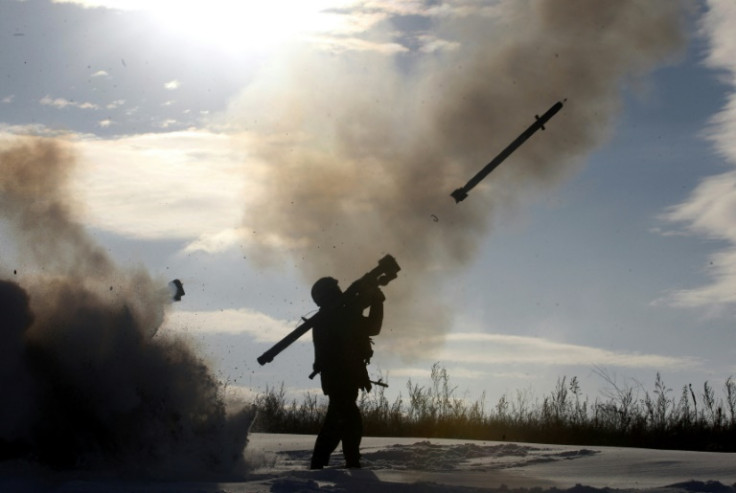Russia Has Enough Missiles For Few More Large-Scale Attacks On Ukraine: Intelligence Chief

KEY POINTS
- Kyrylo Budanov noted that Russia's missile reserves are currently at critical levels
- A Ukrainian infographic published in November suggested that Russia has plenty of stocks of only three kinds of missiles
- Iran has not yet supplied Russia with drones since the start of December
The Russian army may still have enough supplies of missiles to launch more waves of large-scale attacks on Ukraine, a Ukrainian intelligence chief said Tuesday.
However, Kyrylo Budanov, chief of the Main Intelligence Directorate of the Ministry of Defense, said that Russia's reserves of high-precision weapons would "reach zero" if they launch more large-scale missile attacks, adding that the Russian army's reserves are currently at critical levels.
"In fact, the reserves of high-precision weapons in the Russian Federation are already running low. They have long since reached a critical minimum. However, as we can see, they have decided to go all the way, that is, reach zero. Which, in principle, is very bad for the Russian Federation itself. The military there knows about this problem," Budanov said during a national joint 24/7 newscast, as quoted by Ukrainska Pravda.
"In reality, they still have [missiles] for a few large-scale attacks, and they will reach the bottom of the barrel."
It is unclear how many missiles Russia still has in its reserves. However, a Ukrainian infographic report suggested that, as of Nov. 18, at least 50% of Moscow's X-101 and X-555 cruise missiles, 41% of X-35 anti-ship missiles, 37% of Kalibr cruise and 32% of X-22 and X-32 cruise missiles have already been used in the war.
As per the infographic, only the 3M55 Onyx anti-ship missiles, anti-aircraft guided missiles for the S-300 SAM system and the hypersonic KH-47M2 "Kinzhal" missiles have plenty of reserves left.
Only a few of Russia's missiles are being reproduced, including the Iskander, Kalibr, X-101, X-35 and KH-47M2 "Kinzhal" missiles.
Additionally, Mykhailo Podolyak, who serves as the adviser to Ukrainian President Volodymyr Zelensky, told The Guardian that Iran has yet to supply Russia with a single ballistic missile since the beginning of December due to diplomatic pressure and political turmoil.
Iran had previously supplied Russia with 2,400 drones, many of which were used in attacks on Kyiv and Zaporizhzhia. But while Moscow's stocks of Iranian drones are "almost exhausted," Podolyak said Iran had transferred the technology to Russia, which means Moscow can manufacture more drones.

© Copyright IBTimes 2024. All rights reserved.












